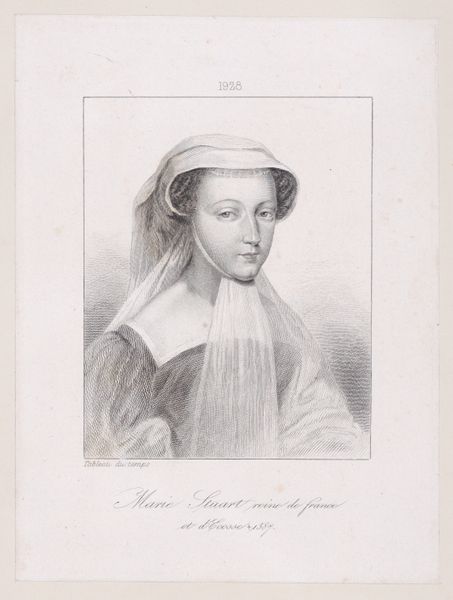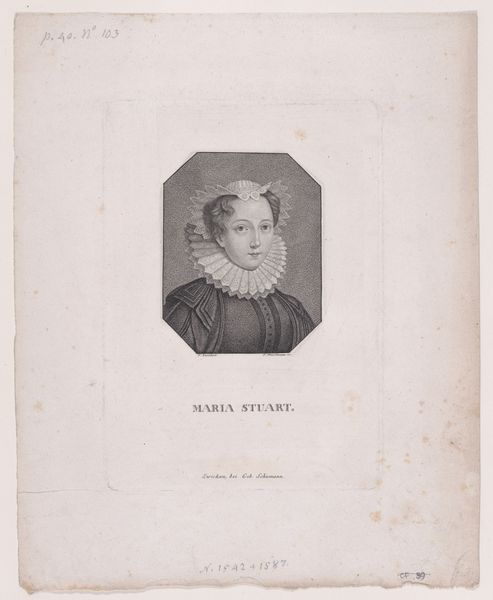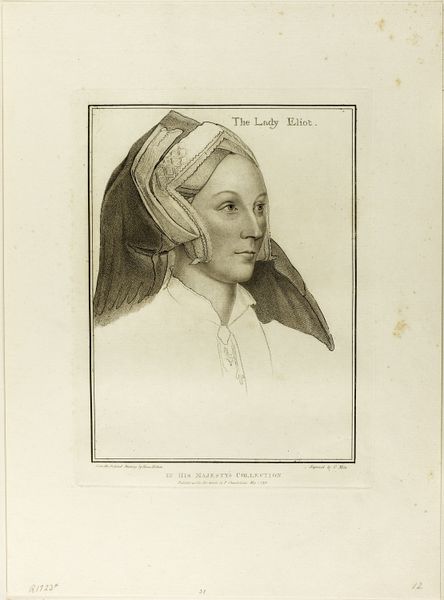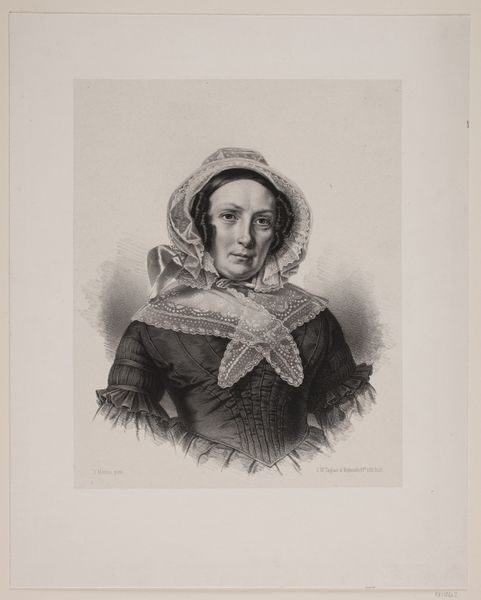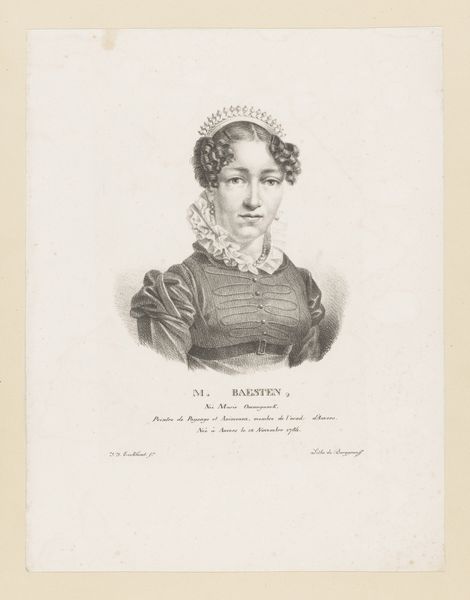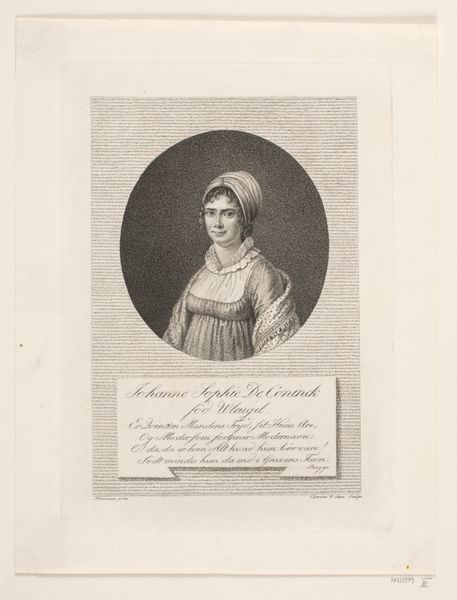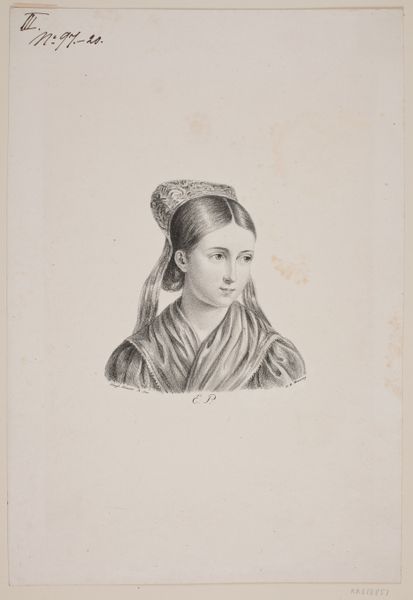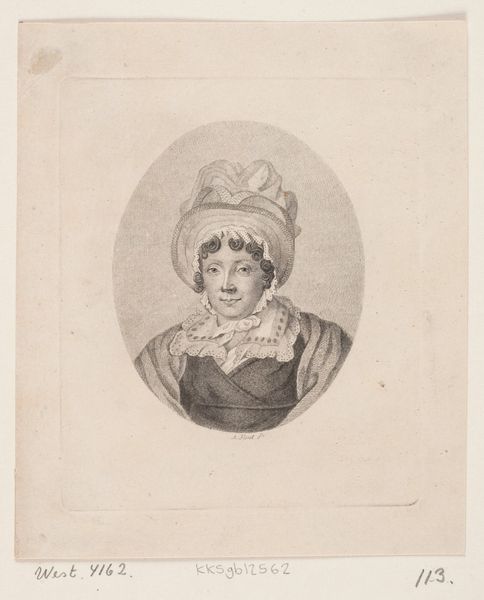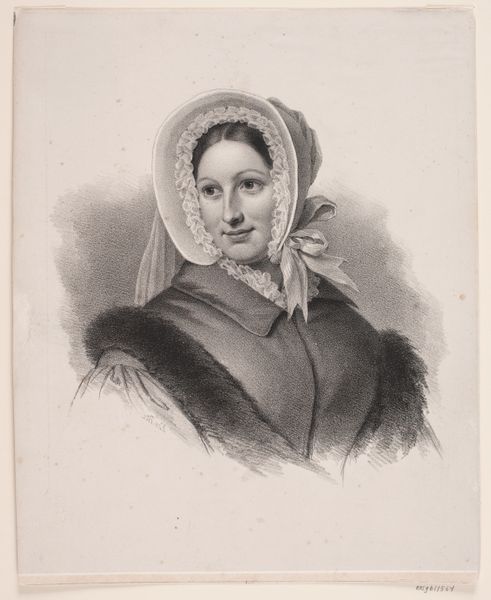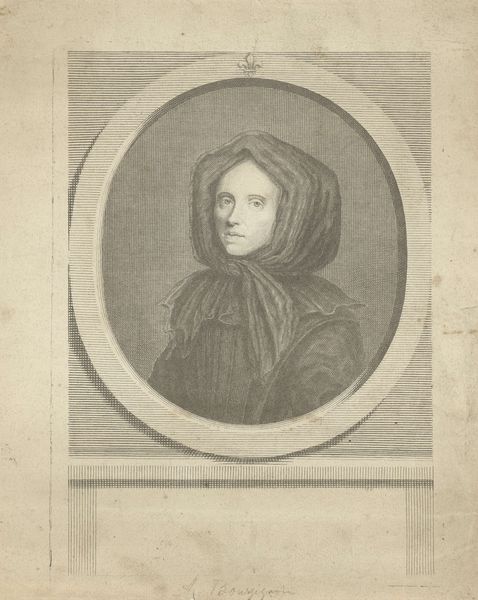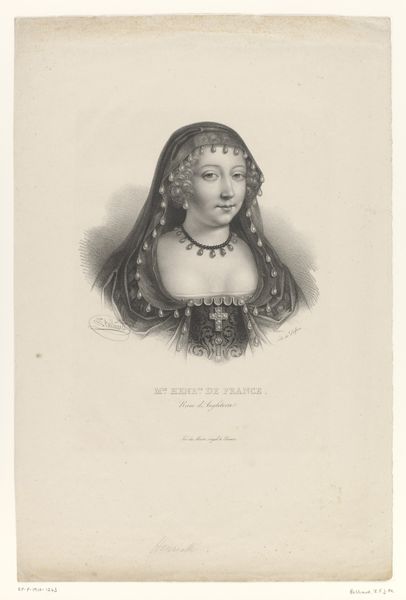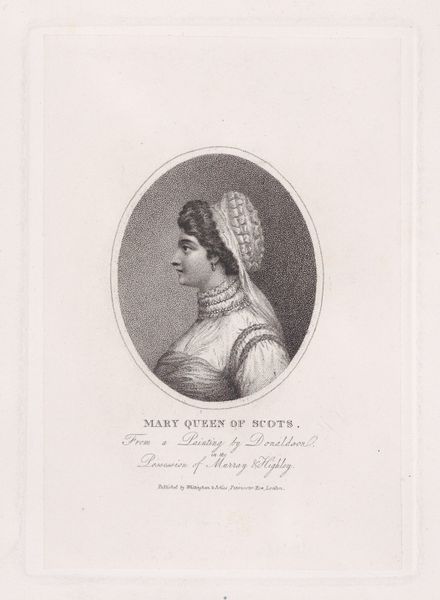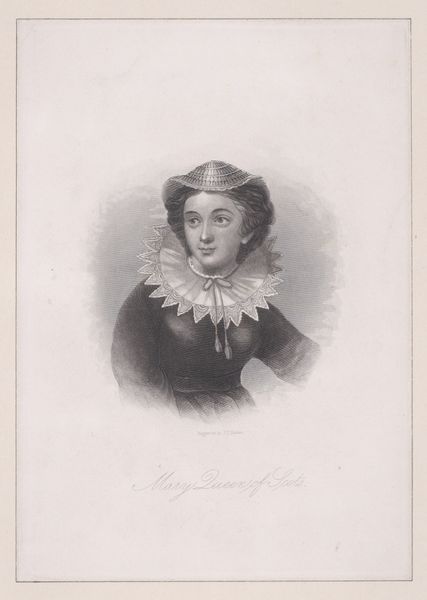
drawing, lithograph, print
#
portrait
#
drawing
#
lithograph
# print
#
romanticism
Dimensions: Sheet: 7 1/8 × 4 3/8 in. (18.1 × 11.1 cm)
Copyright: Public Domain
Editor: So, this is a lithograph from 1836 by William Holl the Younger, titled *Mary, Queen of Scots.* The soft lines of the print give her such a vulnerable appearance, even delicate. What do you make of it? Curator: The vulnerability you perceive is quite striking. The image certainly invites reflection on the layers of meaning accumulated around Mary’s persona. Consider the headdress; it's both modest and regal, isn't it? A signifier of piety and constraint, yet also of status and lineage. Do you see a conflict there? Editor: I do. It feels like a visual representation of the conflict in her life– between her duty and her desires, maybe? Curator: Exactly! The portrait operates on multiple levels. Holl uses familiar tropes of Romanticism – the pensive gaze, the subtle chiaroscuro – to tap into the cultural memory of Mary as a tragic figure, burdened by destiny. The simplicity emphasizes the emotional and psychological weight she carries. Consider too, the gaze she offers us… what do you discern in it? Editor: It feels almost accusatory, maybe even pleading. As if she's silently asking us to understand. Curator: Precisely! The artist employs these visual symbols, almost archetypes, to speak to universal themes: power, betrayal, sacrifice. The lithograph, as a readily reproducible image, democratized that narrative. Editor: That's fascinating – I never considered how the printmaking technique would influence its meaning. It really puts her story into the hands of the public. Curator: Indeed! This piece is a powerful example of how images serve as cultural touchstones, carrying forward history. Editor: Thanks, that's given me a whole new appreciation for this image, how the romantic style and printing technology amplify its cultural and historical implications!
Comments
No comments
Be the first to comment and join the conversation on the ultimate creative platform.
